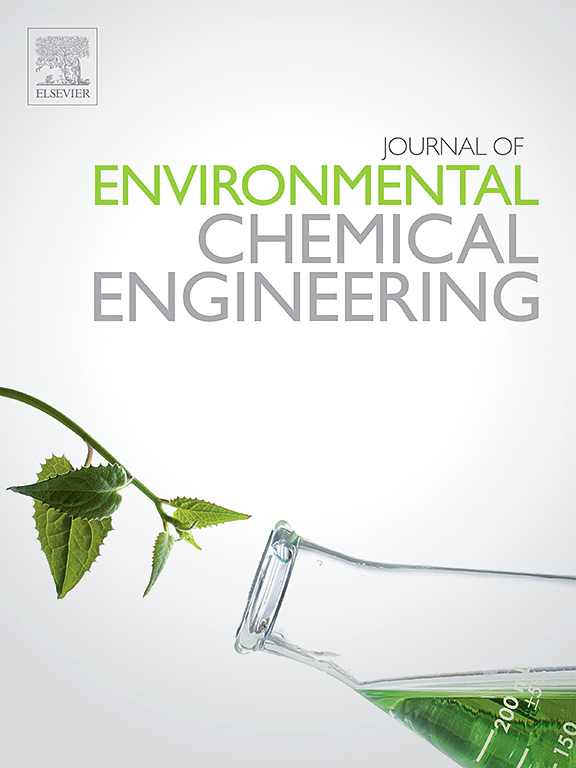A customized sulfur-doping Zr-MOF-fabric composite for selective and efficient gold recovery
IF 7.4
2区 工程技术
Q1 ENGINEERING, CHEMICAL
引用次数: 0
Abstract
Metal-organic frameworks (MOFs) have exhibited great potential in various adsorption and separation fields, such as the adsorption of metal ions, separation of organic pollutants, and recovery of precious metals from aqueous-based matrices. Here, we prepared a series of sulfur-doping Zr-MOF-fabric composites by in-situ growth of zirconium metal ions with sulfur-containing organic ligands on the surface of carboxylated fabrics (CF-Ph-COOH). The formic acid (FA) regulated mercaptosuccinic acid (MSA) and 2,2’-dithiobisbenzoic acid (DTSA) Zr-MOF-fabric (CF-Zr-MSA-FA and CF-Zr-DTSA-FA) composites exhibit excellent Au3+ adsorption from water with saturated adsorption capacities of 141.15 mg/g and 169.28 mg/g, respectively, and showing over 90 % adsorption removal rate in the pH range of 2–6, especially for CF-Zr-DTSA-FA could maintain more than 99.99 %. Most strikingly, the prepared MOF-fabric composites display excellent selective adsorption for Au3+ in mixed solutions, and the selective adsorption efficiency of CF-Zr-MSA-FA and CF-Zr-DTSA-FA was up to 95.69 % and 85.37 %, respectively. Finally, the prepared MOF-fabric composites can be reused as filtering membrane for gold recovery, which also could provide a facile strategy to recover gold from water, and extending the practical applications of MOFs textile composite.
求助全文
约1分钟内获得全文
求助全文
来源期刊

Journal of Environmental Chemical Engineering
Environmental Science-Pollution
CiteScore
11.40
自引率
6.50%
发文量
2017
审稿时长
27 days
期刊介绍:
The Journal of Environmental Chemical Engineering (JECE) serves as a platform for the dissemination of original and innovative research focusing on the advancement of environmentally-friendly, sustainable technologies. JECE emphasizes the transition towards a carbon-neutral circular economy and a self-sufficient bio-based economy. Topics covered include soil, water, wastewater, and air decontamination; pollution monitoring, prevention, and control; advanced analytics, sensors, impact and risk assessment methodologies in environmental chemical engineering; resource recovery (water, nutrients, materials, energy); industrial ecology; valorization of waste streams; waste management (including e-waste); climate-water-energy-food nexus; novel materials for environmental, chemical, and energy applications; sustainability and environmental safety; water digitalization, water data science, and machine learning; process integration and intensification; recent developments in green chemistry for synthesis, catalysis, and energy; and original research on contaminants of emerging concern, persistent chemicals, and priority substances, including microplastics, nanoplastics, nanomaterials, micropollutants, antimicrobial resistance genes, and emerging pathogens (viruses, bacteria, parasites) of environmental significance.
 求助内容:
求助内容: 应助结果提醒方式:
应助结果提醒方式:


